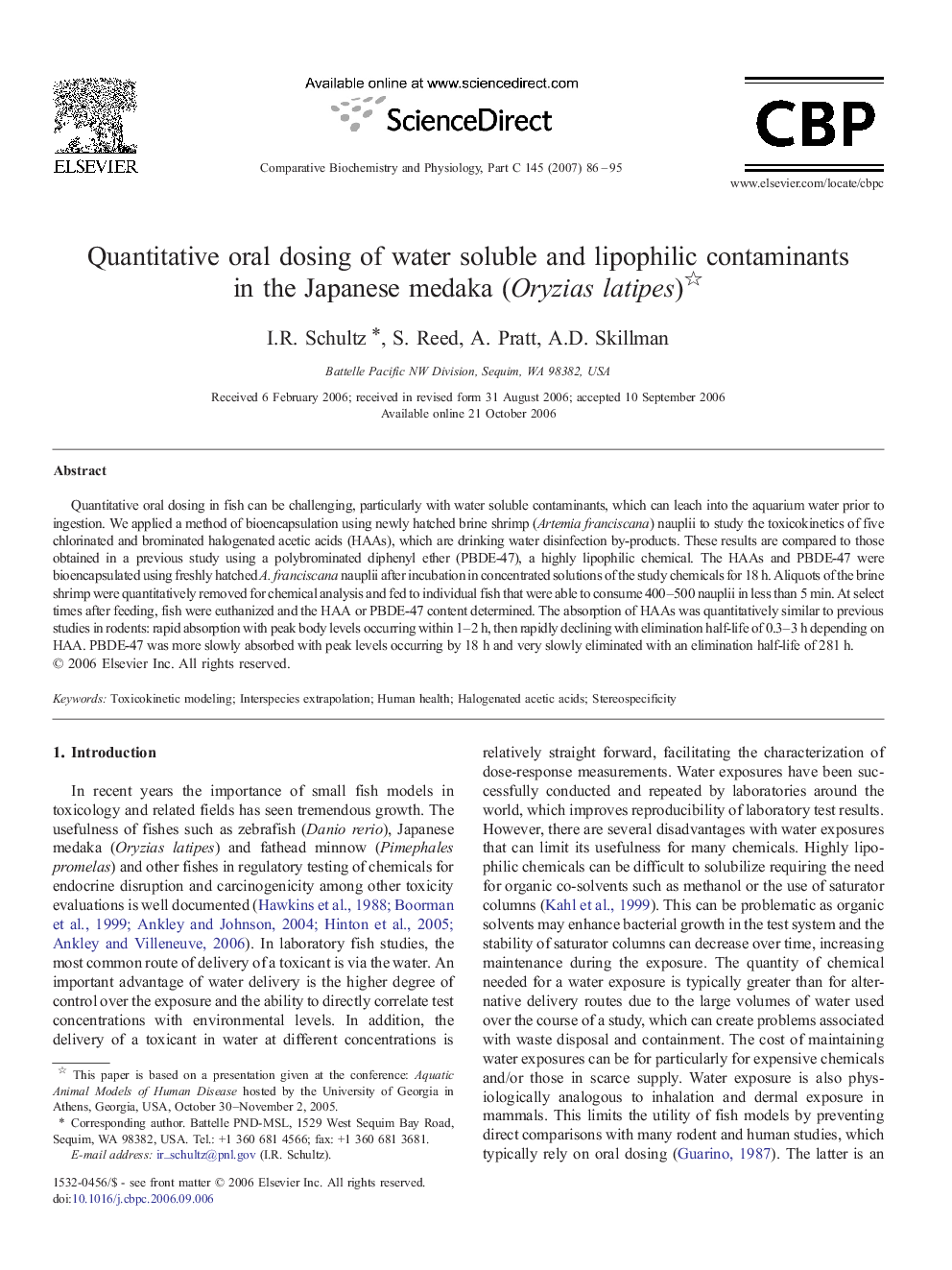| کد مقاله | کد نشریه | سال انتشار | مقاله انگلیسی | نسخه تمام متن |
|---|---|---|---|---|
| 1978032 | 1061522 | 2007 | 10 صفحه PDF | دانلود رایگان |

Quantitative oral dosing in fish can be challenging, particularly with water soluble contaminants, which can leach into the aquarium water prior to ingestion. We applied a method of bioencapsulation using newly hatched brine shrimp (Artemia franciscana) nauplii to study the toxicokinetics of five chlorinated and brominated halogenated acetic acids (HAAs), which are drinking water disinfection by-products. These results are compared to those obtained in a previous study using a polybrominated diphenyl ether (PBDE-47), a highly lipophilic chemical. The HAAs and PBDE-47 were bioencapsulated using freshly hatched A. franciscana nauplii after incubation in concentrated solutions of the study chemicals for 18 h. Aliquots of the brine shrimp were quantitatively removed for chemical analysis and fed to individual fish that were able to consume 400–500 nauplii in less than 5 min. At select times after feeding, fish were euthanized and the HAA or PBDE-47 content determined. The absorption of HAAs was quantitatively similar to previous studies in rodents: rapid absorption with peak body levels occurring within 1–2 h, then rapidly declining with elimination half-life of 0.3–3 h depending on HAA. PBDE-47 was more slowly absorbed with peak levels occurring by 18 h and very slowly eliminated with an elimination half-life of 281 h.
Journal: Comparative Biochemistry and Physiology Part C: Toxicology & Pharmacology - Volume 145, Issue 1, February 2007, Pages 86–95